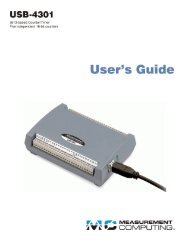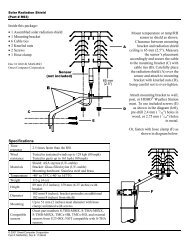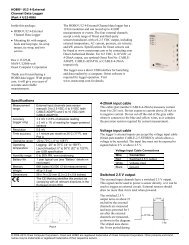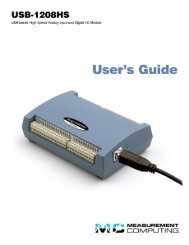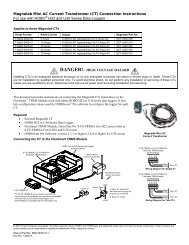You also want an ePaper? Increase the reach of your titles
YUMPU automatically turns print PDFs into web optimized ePapers that Google loves.
Fig 1.5: Phasor diagram showing Three-phase, Four-wire Delta Connected System<br />
1.1.3: Blondell’s Theorem and Three Phase Measurement<br />
In 1893 an engineer and mathematician named Andre E. Blondell set forth the first scientific basis<br />
for poly phase metering. His theorem states:<br />
<br />
If energy is supplied to any system of conductors through N wires, the total power in the system is<br />
given by the algebraic sum of the readings of N wattmeters so arranged that each of the N wires<br />
contains one current coil, the corresponding potential coil being connected between that wire and<br />
some <strong>com</strong>mon point. If this <strong>com</strong>mon point is on one of the N wires, the measurement may be made<br />
by the use of N-1 wattmeters.<br />
The theorem may be stated more simply, in modern language:<br />
<br />
<br />
<br />
In a system of N conductors, N-1 meter elements will measure the power or energy taken provided<br />
that all the potential coils have a <strong>com</strong>mon tie to the conductor in which there is no current coil.<br />
Three-phase power measurement is ac<strong>com</strong>plished by measuring the three individual phases and<br />
adding them together to obtain the total three phase value. In older analog meters, this<br />
measurement was ac<strong>com</strong>plished using up to three separate elements. Each element <strong>com</strong>bined the<br />
single-phase voltage and current to produce a torque on the meter disk. All three elements were<br />
arranged around the disk so that the disk was subjected to the <strong>com</strong>bined torque of the three elements.<br />
As a result the disk would turn at a higher speed and register power supplied by each of the three<br />
wires.<br />
According to Blondell's Theorem, it was possible to reduce the number of elements under certain<br />
conditions. For example, a three-phase, three-wire delta system could be correctly measured with<br />
two elements (two potential coils and two current coils) if the potential coils were connected<br />
between the three phases with one phase in <strong>com</strong>mon.<br />
In a three-phase, four-wire wye system it is necessary to use three elements. Three voltage coils are<br />
connected between the three phases and the <strong>com</strong>mon neutral conductor. A current coil is required in<br />
each of the three phases.<br />
<br />
In modern digital meters, Blondell's Theorem is still applied to obtain proper metering. The<br />
difference in modern meters is that the digital meter measures each phase voltage and current and<br />
calculates the single-phase power for each phase. The meter then sums the three phase powers to a<br />
e Electro Industries/GaugeTech Doc # E149721 1-4






